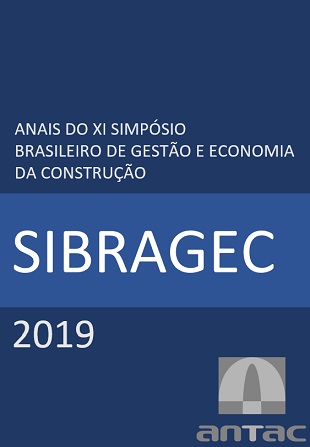Evaluation of 4D BIM use to reduce transportation waste in construction production processes
DOI:
https://doi.org/10.46421/sibragec.v11i00.35Palabras clave:
4D BIM, transportation waste, flow simulation, construction site, non-adding value activitiesResumen
The use of 4D Building Information Models (BIM) for planning construction site logistics has increased in recent years. However, most 4D BIM studies have focused on transformation tasks, neglecting flow activities. Hence, the objective of this paper is to evaluate the use of 4D models for flow simulation at operational level, aiming to reduce transportation waste. A field study was conducted on a residential housing project in Brazil. The study included three stages: data collection; 4D BIM simulation; and outcome analysis. Data collection during the site visits aimed to map the physical flows involved in the construction processes studied. Transportation waste were identified, constructive details were collected and time studies were conducted. This information was used for the 4D model development. During the outcome analysis the 4D BIM was presented and discussed in a seminar to the managers and in a workshop to the workers. After that, the model was implemented in the field and the contributions of the 4D BIM for transportation waste reduction were identified. The results highlighted the need to plan transportation activities in constructions site. The use of the simulation developed contributes to the reduction of transportation waste consequences, such as: unsafe working conditions, new transportation activities, and longer distances.

